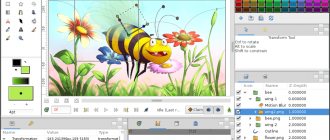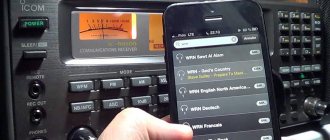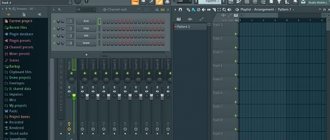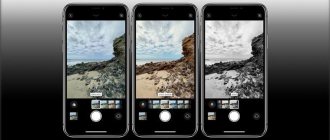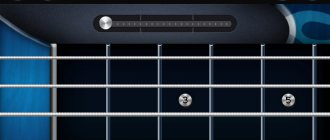Mobile animation has long ago transformed from a simple way of expressing accumulated emotions into a multifunctional tool intended both for advertising promotion and for creative and artistic experiments.
And the main thing here is to find a suitable visualization program for Android, choose a theme and start reviving and animating two-dimensional drawings. And, if it’s not so easy to suggest topics here, then with programs for creating animation things are straightforward:
Cinema 4D
- Platforms: Windows, macOS, Linux.
A professional solution for creating 3D objects, animated graphics and realistic renderings. Cinema 4D has a simple interface that is easy to understand even for a beginner. The program supports procedural and polygonal modeling, and also has various package modules for all occasions, including scene visualization, simulation of object dynamics, character animation and more.
GroupMe
QR Code
GroupMe
Developer: groupme
Price: Free
Some messaging apps have a built-in GIF maker feature. GroupMe is one of them. But it can't create GIFs out of thin air. Take a GIF, add text and the app will remake it. It's an easy way to edit GIFs you like and want to use with a little tweaking. But for those who want to create more complex GIFs, this application is not suitable.
TupiTube
- Platforms: Windows, macOS, Linux.
A simple tool for creating 2D animation, aimed at amateur audiences and children in particular. The main feature of TupiTube is its easy drawing process, thanks to which you can make a cartoon in just a few simple steps. There is a built-in library of resources and support for exporting finished animations to various formats.
Download QR Code
TupiTube
Developer: MaeFloresta
Price: Free
Footej Camera
QR Code
Footej Camera
Developer: Semaphore Inc.
Price: Free
Footej Camera is one of the first cameras capable of making GIFs. Although this is not the only advantage of this application. It has manual camera settings, a built-in gallery app, burst mode, photo histogram and more. There is also support for 4K video on many smartphones. The app can also create high-quality GIFs from photos or recorded videos. The app has some minor bugs, but the developers are quite communicative and try to fix them.
Toon Boom Harmony
- Platforms: Windows, macOS.
A complete animation solution that handles the entire process from drawing to final production. Harmony can capture images from a camera, convert 2D objects into 3D, and scan storyboards from tracing paper. The application will help you unleash your creative potential with a large set of brushes, palettes and special effects. The finished result can be easily saved as an animation or transferred to the Unity game engine.
Gif Me! Camera - GIF maker
QR Code
Gif Me! Camera - GIF maker
Developer: XnView
Price: Free
Gif Mu Camera is a camera app specifically designed for creating GIFs. Make a 14 second video, add color filters, stickers, text and you're done. It is possible to pause and slow down shooting. For those who already have a video, they will be able to convert it to GIF. The free version has ads and a watermark. The Pro version removes both of these things.
Professional paid software
Cartoon Animator 4
Cartoon Animator 4 is a program from the famous developer Reallusion, one of the easiest 2D animation editor for a computer, it will allow you to get professional quality with the least effort. Previously, the program was called CrazyTalk Animator. You can “revive” an image, logo and other projects by adding a movement effect to them. Ready-made templates, motion libraries, a powerful 2D editor responsible for plasticity, lip movement, and facial expressions are available.
Anime Studio Pro (Moho)
Designed for creating cartoons, with a large set of tools for professional work with 2D animation, including a library of ready-made characters. This is an advanced application focused on working with vector animation. With its help, you can produce high-quality work from scratch, create original animated films, using your own characters or using actors from the built-in collection.
Adobe Animate
A professional editor for creating animation on a PC, with a powerful tool base and libraries of ready-made objects. Allows you to create videos for websites, animated blocks for TV programs, short cartoons and other types of multimedia content. The software product is an improved version of Adobe Flash, adapted for 64-bit platforms running under Windows.
Toon Boom Harmony
A professional and at the same time accessible program for the average user, designed for creating cartoons and drawing animation, which is widely used in the film industry by such well-known companies as Walt Disney, Warner Bros and others.
Motion Stills
QR Code
Motion Stills
Developer: Research at Google
Price: Free
Motion Stills is a GIF maker app from Google. It has two modes. The first one shoots a short video and makes a GIF out of it. The second mode allows you to shoot slow-motion video. You can share your video as looping GIFs. It just depends on what you need. The app has a few bugs, but the developers will fix them. The app is free with no ads or purchases.
Animator - a tool for creating animations on Android
This article is for Android developers. If you want to master this profession, pay attention to the course “Profession Android Developer” from the online university Skillbox.
What is Animator?
The article was first published here.
A little history. Since the launch of the Android platform, there has been the View Animation framework. It was intended, as the name suggests, for animation. But the performance of devices at the end of the 2000s was so low that no one really thought about beautiful animations, so the framework was not convenient and flexible. It had only four types of animation (TranslateAnimation, AlphaAnimation, ScaleAnimation, RotateAnimation), a class that allowed them to be combined (AnimationSet), and the ability to work only with classes inherited from View.
Android 3.0 introduced a much more flexible Property Animation framework. It can change any available property, and can also work with any class. Its main tool is Animator.
Animator is a type of class designed to change the values of a selected object relative to time. Roughly speaking, it is a tool for controlling a flow of a given duration, which changes a certain property from an initial value to a final value. Such a smoothly changing property in animation could be, for example, transparency.
Classes inherited from Animator
ValueAnimator (inherits from Animator)
In the simplest version, we give this class the type of value to change, the initial value and the final value, and run it. In response, we will receive events for the beginning, end, repetition and cancellation of the animation, and two more events that are set separately for pausing and changing the value. The change event is perhaps the most important: it will receive a changed value, with the help of which we will change the properties of objects.
Look at changing alpha with it:
ValueAnimator animator = ValueAnimator.ofFloat(0, 1); animator.addUpdateListener(new ValueAnimator.AnimatorUpdateListener() { @Override public void onAnimationUpdate(ValueAnimator animation) { view.setAlpha((Float) animation.getAnimatedValue()); } }); animator.start();
ObjectAnimator, inherits from ValueAnimator
This is a class designed to make working with ValueAnimator easier. With it, you don't have to manually change any value on a change event - you just give the Animator an object and specify the field you want to change, for example scaleX. Using Java Refliction, a setter is searched for this field (in this case, setScaleX. Next, Animator will independently change the value of this field.
Using ObjectAnimator, changing alpha would look like this:
ObjectAnimator.ofFloat(view, View.ALPHA, 0, 1).start();
The View class has several properties specifically designed for animation with Animator:
- transparency (View.ALPHA)
- scale(View.SCALE_X, View.SCALE_Y)
- rotation (View.ROTATION, View.ROTATION_X, View.ROTATION_Y)
- position (View.X, View.Y, View.Z)
- position of the displayed part (View.TRANSLATION_X, View.TRANSLATION_Y, View.TRANSLATION_Z)
AnimatorSet (inherited from Animator)
This is a class that allows you to combine animations in different ways: run simultaneously or sequentially, add delays, etc.
ViewPropertyAnimator
This is a separate class. It does not inherit from Animator, but has the same logic as ObjectAnimator for View, and is designed to easily animate any View without unnecessary hassles.
This is how you can use it to change alpha:
view.animate().alphaBy(0).alpha(1).start();
How we started using Animator
About a year ago I was faced with the task of creating an animation when an element was clicked. Like this:
It's not that I haven't done animations before, but outsourcing them is rarely needed. So I googled Animation Android. The first five links described in some detail how animations are made, and I got started. Here's the first result:
Code Animation
public static void likeAnimation(@DrawableRes int icon, final ImageView imageView) { imageView.setImageResource(icon); imageView.setVisibility(View.VISIBLE); AlphaAnimation showAlphaAnimation = new AlphaAnimation(0.0f, 1.0f); showAlphaAnimation.setDuration(SHOW_DURATION); ScaleAnimation showScaleAnimation = new ScaleAnimation(0.2f, 1.4f, 0.2f, 1.4f, android.view.animation.Animation.RELATIVE_TO_SELF, 0.5f, android.view.animation.Animation.RELATIVE_TO_SELF, 0.5f); showScaleAnimation.setDuration(SHOW_DURATION); AnimationSet showAnimationSet = new AnimationSet(false); showAnimationSet.addAnimation(showAlphaAnimation); showAnimationSet.addAnimation(showScaleAnimation); showAnimationSet.setAnimationListener(new OnEndAnimationListener() { @Override public void onAnimationEnd(android.view.animation.Animation animation) { ScaleAnimation toNormalScaleAnimation = new ScaleAnimation(1.4f, 1.0f, 1.4f, 1.0f, android.view.animation.Animation .RELATIVE_TO_SELF, 0.5f, android.view.animation.Animation.RELATIVE_TO_SELF, 0.5f); toNormalScaleAnimation.setDuration(TO_NORMAL_DURATION); toNormalScaleAnimation.setAnimationListener(new OnEndAnimationListener() { @Override public void onAnimationEnd(android.view.animation.An animation animation ) { AlphaAnimation hideAlphaAnimation = new AlphaAnimation(1.0f, 0.0f); hideAlphaAnimation.setDuration(HIDE_DURATION); ScaleAnimation hideScaleAnimation = new ScaleAnimation(1.0f, 0.2f, 1.0f, 0.2f, android.view.animation.Animation.RELATIVE_TO_SELF, 0.5f, android.view.animation.Animation.RELATIVE_TO_SELF, 0.5f); hideScaleAnimation.setDuration(HIDE_DURATION); AnimationSet hideAnimationSet = new AnimationSet(false); hideAnimationSet.setStartOffset(HIDE_DELAY); hideAnimationSet.addAnimation(hideAlphaAnimation); hideAnimationSet.addAnimation(hideScaleAnimation); hideAnimationSet.setAnimationListener(new OnEndAnimationListener() { @Override public void onAnimationEnd(android.view.animation.Animation animation) { imageView.setVisibility(View.GONE); } }); imageView.startAnimation(hideAnimationSet); } }); imageView.startAnimation(toNormalScaleAnimation); } }); imageView.startAnimation(showAnimationSet); }
Code link
The code turned out to be unclear, which prompted me to look for a different approach to composing a sequence of animations. The solution was found on StackOveflow. The idea is this: place each subsequent animation in an animation sequence in an AnimationSet with a shift equal to the sum of the durations of previous animations. It turned out much better than before:
AnimationSet:
public static void likeAnimation(@DrawableRes int icon, final ImageView imageView) { imageView.setImageResource(icon); imageView.setVisibility(View.VISIBLE); AnimationSet animationSet = new AnimationSet(false); animationSet.addAnimation(showAlphaAnimation()); animationSet.addAnimation(showScaleAnimation()); animationSet.addAnimation(toNormalScaleAnimation()); animationSet.addAnimation(hideAlphaAnimation()); animationSet.addAnimation(hideScaleAnimation()); animationSet.setAnimationListener(new OnEndAnimationListener() { @Override public void onAnimationEnd(Animation animation) { imageView.setVisibility(View.GONE); } }); imageView.startAnimation(animationSet); } private static Animation showAlphaAnimation() { AlphaAnimation showAlphaAnimation = new AlphaAnimation(0.0f, 1.0f); showAlphaAnimation.setDuration(SHOW_DURATION); return showAlphaAnimation; } private static Animation showScaleAnimation() { ScaleAnimation showScaleAnimation = new ScaleAnimation( 0.2f, 1.4f, 0.2f, 1.4f, Animation.RELATIVE_TO_SELF, 0.5f, Animation.RELATIVE_TO_SELF, 0.5f); showScaleAnimation.setDuration(SHOW_DURATION); return showScaleAnimation; } private static Animation toNormalScaleAnimation() { ScaleAnimation toNormalScaleAnimation = new ScaleAnimation( 1.4f, 1.0f, 1.4f, 1.0f, Animation.RELATIVE_TO_SELF, 0.5f, Animation.RELATIVE_TO_SELF, 0.5f); toNormalScaleAnimation.setDuration(TO_NORMAL_DURATION); toNormalScaleAnimation.setStartOffset(SHOW_DURATION); return toNormalScaleAnimation; } private static Animation hideAlphaAnimation() { AlphaAnimation hideAlphaAnimation = new AlphaAnimation(1.0f, 0.0f); hideAlphaAnimation.setDuration(HIDE_DURATION); hideAlphaAnimation.setStartOffset(SHOW_DURATION + TO_NORMAL_DURATION + HIDE_DELAY); return hideAlphaAnimation; } private static Animation hideScaleAnimation() { ScaleAnimation hideScaleAnimation = new ScaleAnimation( 1.0f, 0.2f, 1.0f, 0.2f, Animation.RELATIVE_TO_SELF, 0.5f, Animation.RELATIVE_TO_SELF, 0.5f); hideScaleAnimation.setDuration(HIDE_DURATION); hideScaleAnimation.setStartOffset(SHOW_DURATION + TO_NORMAL_DURATION + HIDE_DELAY); return hideScaleAnimation; }
Code link
The code has become clearer and more readable, but there is one “but”: monitoring the shift of each animation is quite inconvenient even in such a simple sequence. If you add a few more steps, it becomes an almost impossible task. Another important disadvantage of this approach was the strange behavior of the animation: the size of the animated object, for reasons unknown to me, was larger than with a normal sequence of animations. Attempts to figure it out led nowhere, and I didn’t delve deeper - I still didn’t like the approach. But I decided to develop this idea and break each step into a separate AnimatorSet. Here's what happened:
AnimatorSet to AnimatorSet
public static void likeAnimation(@DrawableRes int icon, final ImageView imageView) { imageView.setImageResource(icon); imageView.setVisibility(View.VISIBLE); AnimationSet animationSet = new AnimationSet(false); animationSet.addAnimation(showAnimationSet()); animationSet.addAnimation(toNormalAnimationSet()); animationSet.addAnimation(hideAnimationSet()); animationSet.setAnimationListener(new OnEndAnimationListener() { @Override public void onAnimationEnd(Animation animation) { imageView.setVisibility(View.GONE); } }); imageView.startAnimation(animationSet); } private static AnimationSet showAnimationSet() { AlphaAnimation showAlphaAnimation = new AlphaAnimation(0.0f, 1.0f); ScaleAnimation showScaleAnimation = new ScaleAnimation( 0.2f, 1.4f, 0.2f, 1.4f, Animation.RELATIVE_TO_SELF, 0.5f, Animation.RELATIVE_TO_SELF, 0.5f); AnimationSet set = new AnimationSet(false); set.addAnimation(showAlphaAnimation); set.addAnimation(showScaleAnimation); set.setDuration(SHOW_DURATION); return set; } private static AnimationSet toNormalAnimationSet() { ScaleAnimation toNormalScaleAnimation = new ScaleAnimation( 1.4f, 1.0f, 1.4f, 1.0f, Animation.RELATIVE_TO_SELF, 0.5f, Animation.RELATIVE_TO_SELF, 0.5f); AnimationSet set = new AnimationSet(false); set.addAnimation(toNormalScaleAnimation); set.setDuration(TO_NORMAL_DURATION); set.setStartOffset(SHOW_DURATION); return set; } private static AnimationSet hideAnimationSet() { AlphaAnimation hideAlphaAnimation = new AlphaAnimation(1.0f, 0.0f); ScaleAnimation hideScaleAnimation = new ScaleAnimation( 1.0f, 0.2f, 1.0f, 0.2f, Animation.RELATIVE_TO_SELF, 0.5f, Animation.RELATIVE_TO_SELF, 0.5f); AnimationSet set = new AnimationSet(false); set.setDuration(HIDE_DURATION); set.addAnimation(hideAlphaAnimation); set.addAnimation(hideScaleAnimation); set.setStartOffset(SHOW_DURATION + TO_NORMAL_DURATION + HIDE_DELAY); return set; }
Code link
Incorrect animation, bad approach, everything is bad. I turned to Google again and came across the fact that Animation is already Legacy code, that is, it is outdated and not supported, although it is in use. I realized that I needed to do animations completely differently. And then, in the vastness of Android Developers, I came across Animator. An attempt to make an animation using it looked like this:
Animator
public static void likeAnimation(@DrawableRes int icon, final ImageView view) { if (view != NULL && !isAnimate) { AnimatorSet set = new AnimatorSet(); set.playSequentially( showAnimatorSet(view), toNormalAnimatorSet(view), hideAnimatorSet(view)); set.addListener(getLikeEndListener(view, icon)); set.start(); } view.animate().alphaBy(0).alpha(1).start(); } private static AnimatorListenerAdapter getLikeEndListener(final ImageView view, final int icon) { return new AnimatorListenerAdapter() { @Override public void onAnimationStart(Animator animation) { super.onAnimationStart(animation); isAnimate = true; view.setVisibility(View.VISIBLE); view.setImageResource(icon); view.setLayerType(View.LAYER_TYPE_HARDWARE, NULL); } @Override public void onAnimationEnd(Animator animation) { super.onAnimationEnd(animation); isAnimate = false; view.setVisibility(View.GONE); view.setImageDrawable(NULL); view.setLayerType(View.LAYER_TYPE_NONE, NULL); } }; } private static AnimatorSet showAnimatorSet(View view) { AnimatorSet set = new AnimatorSet(); set.setDuration(SHOW_DURATION).playTogether( ObjectAnimator.ofFloat(view, View.ALPHA, 0f, 1f), ObjectAnimator.ofFloat(view, View.SCALE_X, 0.2f, 1.4f), ObjectAnimator.ofFloat(view, View.SCALE_Y , 0.2f, 1.4f) ); return set; } private static AnimatorSet toNormalAnimatorSet(View view) { AnimatorSet set = new AnimatorSet(); set.setDuration(TO_NORMAL_DURATION).playTogether( ObjectAnimator.ofFloat(view, View.SCALE_X, 1.4f, 1f), ObjectAnimator.ofFloat(view, View.SCALE_Y, 1.4f, 1f) ); return set; } private static AnimatorSet hideAnimatorSet(View view) { AnimatorSet set = new AnimatorSet(); set.setDuration(HIDE_DURATION).playTogether( ObjectAnimator.ofFloat(view, View.ALPHA, 1f, 0f), ObjectAnimator.ofFloat(view, View.SCALE_X, 1f, 0.2f), ObjectAnimator.ofFloat(view, View.SCALE_Y, 1f, 0.2f) ); set.setStartDelay(HIDE_DELAY); return set; }
Code link
The animation worked flawlessly, which means the search can be considered over. The only thing when working with Animator is to remember whether some Animator has already been launched for a specific view, because otherwise the old one will continue to be executed as if nothing had happened.
Going deeper into Animator
I started searching for what else interesting things could be done using Animator. A flight of thought led me to the following:
When you press the button, four Animators are executed simultaneously:
- Simultaneous launch
AnimatorSet showHideSet = new AnimatorSet();
showHideSet.playTogether( ScrollAnimatorUtils.translationYAnimator(translationY, footerButtons), ScrollAnimatorUtils.translationYAnimator(translationY, footerText), ScrollAnimatorUtils.scrollAnimator(startScroll, endScroll, scrollView), ScrollAnimatorUtils.alphaAnimator(1, 0, recyclerView) ); showHideSet.start(); 1. moves down the footer of the list;
2. Moves the buttons down.
- translationYAnimator
public static Animator translationYAnimator(final float start, int end, final View view, int duration) { ObjectAnimator animator = ObjectAnimator.ofFloat(view, View.TRANSLATION_Y, end);
animator.setDuration(duration); animator.addListener(new AnimatorListenerAdapter() { @Override public void onAnimationEnd(Animator animation) { super.onAnimationEnd(animation); view.setTranslationY(start); } }); return animator; } 3. ScrollView to the very bottom;
- scrollAnimator
public static Animator scrollAnimator(int start, int end, final View view, int duration) { ValueAnimator scrollAnimator = ValueAnimator.ofInt(start, end);
scrollAnimator.addUpdateListener(new ValueAnimator.AnimatorUpdateListener() { @Override public void onAnimationUpdate(ValueAnimator valueAnimator) { view.scrollTo(0, (int) valueAnimator.getAnimatedValue()); } }); scrollAnimator.setDuration(duration); scrollAnimator.addListener(getLayerTypeListener(view)); return scrollAnimator; } 4. applies an alpha effect to the recyclerView.
- alphaAnimator
public static Animator alphaAnimator(int start, int end, View view, int duration) { ValueAnimator alphaAnimator = ObjectAnimator.ofFloat(view, View.ALPHA, start, end);
alphaAnimator.setDuration(duration); alphaAnimator.addListener(getLayerTypeListener(view)); return alphaAnimator; } Link to full code
Link to the project in Github
Animation
**Anyone can be an animator. Bring your ideas to life.** —— You've already heard a lot from friends with iPhones and iPads about this application. Now you can draw animation directly on your tablet computer! No tools needed, just fingers, Animation Desk and you're done. The drawing interface provided by Animation Desk for Android is similar to a real interface, in which professional animators work, who process each frame of the video on a specially equipped desktop, an animation table. Animation Desk for Android provides a simple, friendly and intuitive environment where anyone can create their own animation. Join us and appreciate the beauty of traditional animation!
ALL IN YOUR HANDS! Simply sketch on the screen with your fingers and turn your drawings into animations in just a couple of swipes. Soon you will feel like the creator of your own fantasy world.
User Reviews of Animation Desk: “One of the reasons I've always liked Animation Desk is that you don't have to be a professional with years of experience or a background in design to unleash your full potential and creativity. This app is designed for beginners so that they can easily create animations without requiring much time” – AppCraver
“Designed for amateur and professional animators, Animation Desk is a versatile application capable of creating complex animations through a user-friendly and intuitive user interface.” —AppDictions ******************** Main Features: Friendly and gorgeous user interface Realistic environment for creating animations
Various pressure-sensitive drawing tools Fill tool, hand, pencil, felt-tip pen, pen, three types of brushes and eraser
Color palette Bring your work to life with a rich palette of over 100 colors.
Adjust the size and transparency of brushes and erasers Customize each stroke to your taste
Wallpapers Animate in the comfort of your life by placing your favorite images in the background as wallpapers
Online tracing Overlaying adjacent frames
Supports four frame rate modes The smoothness of animation depends on the frame rate, which can be adjusted from 3 to 24 frames per second
Easy file management Create and manage files in a convenient viewing mode
Powerful HR manager Convenient editing, copying, moving and deleting files
******************** We value your feedback and comments as they help make Animation Desk better! We also maintain contact with the professional user community and constantly refer to them to improve our future projects. Contact us directly at or leave a comment on Facebook www.facebook.com/animationdesk to let us know how we can make it better for you!
**Please visit our website for training and demonstration.
Join our Facebook page and learn more about our apps! — Animation Desk: www.facebook.com/animationdesk — Kdan Mobile: www.facebook.com/kdanmobile
Draw Cartoons 2
Draw Cartoons 2 (Draw Cartoons 2) - An interesting application that will allow you to create a cartoon or animated video directly on your Android device, without the need for drawing or filmmaking skills. The program Draw Cartoons 2 for Android is very simple in terms of operation, it won’t be difficult to understand, everything is done as conveniently as possible, plus there is a training system that will explain in detail all the necessary functions and features of the application. After launching the application and training, you can immediately start making your first drawing; if you don’t have the time or desire to invent something yourself, you can use ready-made backgrounds and blanks, of which there are quite a large number in the application.
You can attach not only a ready-made background to your cartoon, but also your own image or photograph; it is also possible to insert a sound file, this way you will get a fun animation with sound. Each object or character consists of bones and dots, to which various elements are attached; to create an object you need to draw it and put it together. If you don’t know how to draw or simply don’t want to, you can use ready-made templates, which you can then edit to suit your needs. To create a new element, you need to click on the blue button, it is located in the upper right corner, the graphic editor will immediately open, in the central part there will be a horizontal black stripe - this is the bone to which your drawing will subsequently be attached.
To create a multi-frame drawing, you need to create a separate frame for each, for example, if you want to draw a face that will change emotions, on the first frame we draw the first face, then we add a new frame and draw the second face there, and we do the same for the third frame. After saving, you will have a ready-made animation in which the drawn face will change emotions, in this simple way you can draw and create quite interesting cartoons, it all depends on your imagination. In addition to everything, the program has other useful tools; in skillful hands, they will allow you to turn ordinary animation into masterpieces, which you can then share with friends or upload to your YouTube channel.
Features :
DOWNLOAD:
| Draw Cartoons 2 - v2.10 | [File size - 40.8 Mb] |
| Draw Cartoons 2 |
Online services
Animaker
Animaker is an online animation creation service that offers plans for all types of users - from beginners to studios. Even the free version has the necessary features and resources to help users create amazing animated videos in a variety of styles. With Animaker you can create 2D and 2.5D videos, animated infographic videos, graphics, custom videos, website animations and much more.
Go to animaker.com
Vyond
Vyond Studio offers an online animation tool to create stunning professional animations, including explainer videos, website/social media animations, and more. This interactive tool has handy features, lets you create character animations, create eye-catching visualizations of boring data, and much more.
Go to vyond.com
Moovly
An interesting online service for creating animated videos for various purposes: social networks, advertising, explainer videos, presentations and much more. The tool is ideal for users of all levels, as well as large and small businesses. Moovly provides an easy-to-use library of templates, as well as images, videos, and audio files.
Go to moovly.com
video
An online animation tool that doesn't require extensive animation experience. With Wideo, you can create animated videos for a variety of purposes: explainer videos, data videos, promotional videos, animated presentations, business videos, and more. To help you get started, the developers at Wideo record very helpful beginner lessons that explain the basics of using the app.
Go to wideo.co
Free programs
OpenToonz
This program was used to create such cartoons as: Spirited Away, Futurama, SpongeBob SquarePants, Steven Universe. Now available to everyone as Open Source, or free. The program allows you to draw vector and raster graphics using graphics tablets, which artists who are accustomed to drawing with a pen really like to use. There are tools to make skeletal animation. The application also supports the traditional process of creating animation drawn on tracing paper.
Pencil2D
Pencil 2D Animation is a free application that contains tools for creating simple 2D animation. Supports work with raster and vector graphics, distributed freely with open source code.
It's lightweight and easy to use, allowing you to focus entirely on your animation. As you work, you can quickly switch between raster and vector graphics, drawing sketches and coloring frames with paints or inks. The program has a full-fledged timeline with separate tracks for raster and vector graphics, and cameras.
Synfig Studio
When working with the application, raster and vector objects are used. In other words, Synfig Studio is an editor that can relieve the artist from the need to draw frames of an animated image separately. This program applies effects that are calculated in real time and then applied to layers.
Movepic
The principle of operation of this application is reminiscent of Pixaloop - you use vectors to specify the direction of movement in the photo that you want to animate, and the motionless areas will need to be painted over. The application has a large selection of built-in filters and effects.
One of the disadvantages is that Movepic saves the “animated” image only in video format, as well as a watermark, so you will have to subscribe to remove it.

